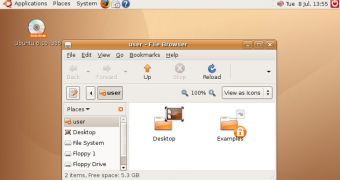Ubuntu 6.10 (Edgy Eft) was a distribution launched back in 2006 that proved to be a real success for Canonical. It's interesting to see what happened with the bleeding edge software that was running back then and how it failed to be adopted in the years that followed.
Back in 2006, users had a really different vision of the future and imagined that all the desktops everywhere would be full of nice effects, 3D desktops, and probably holograms. The holograms are not here yet, but the nice effects and 3D desktops have come and gone.
The developers filtered all the bling out of the Linux distribution and getting a wobbly window requires the intervention of a third-party application, not to mention the fact that most users don't even know that such effects have been around for almost a decade.
Most of the stuff that was done back then was experimental and never really caught on, even if it seemed cool. What you can see in the video is not actually practical and it would probably get in the way.
The effects were achieved with the help of XGL (which was using the Beryl compositor and not compiz) and a fancy dock application called Kiba-Dock. That was something that could be found mostly on the Mac OS systems, although Windows also had some dock applications, which were not exactly cheap.
Xgl was an X server architecture layered on top of OpenGL that allowed such effects to be implemented fairly easily. Some of the development of Xgl was done in closed source, which was not a popular decision back then. The implementation of Xgl was easily done in Ubuntu 6.10 (Edgy Eft), which was using AIGLX by default.
The project disappeared after a few years and the developers moved to other, more down-to-Earth software. Linux is an open source system and those kinds of effects could be done even today, if someone were to bother with them.
If you are using Ubuntu it's still possible to get some of the effects for the windows and there are a couple of methods to get a 3D desktop, although very few people actually take the time to implement it. There are no binaries and you will probably have to compile it yourself.
As for the dock applications, they are still around, although they tend to be a little bit simpler and to the point. All the strange – but basically useless effects – are no longer integrated.
Enjoy the past!

 14 DAY TRIAL //
14 DAY TRIAL // 